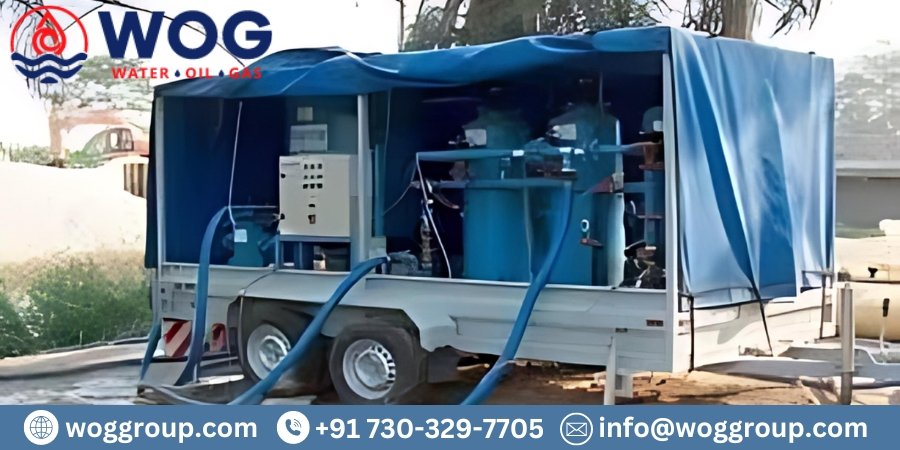How Mobile Water Purification System Revolutionize Access to Safe Water
Today’s technologically evolved globe nevertheless faces water scarcity and contamination, especially in rural or disaster-stricken locations. Mobile water purification systems revolutionize safe drinking water. These unique, portable systems give clean, potable water on the go, benefiting underserved populations.
Mobile water purification systems remove contaminants, germs, and viruses from untreated water sources using modern filtering methods. Their small, lightweight form makes them easy to travel and deploy, ensuring clean water is available when needed. These devices enable relief organizations, emergency responders, and outdoor enthusiasts to swiftly and effectively manage water issues. In an emergency or when camping, these mobile water treatment systems provide safe drinking water.
We can enhance health and save lives by adding mobile water purifying systems to disaster response plans or giving them to underprivileged groups. These systems are enabling safe water for all in the future.
The global water crisis and the need for safe drinking water
One of humanity’s biggest problems is the water shortage. Having billions without adequate drinking water has serious health, development, and environmental consequences. The dilemma and urgent need for clean water solutions are explained here.
- Understanding the Water Crisis
- Over 2 billion people live in nations with high water stress when demand exceeds supply. Climate change, population increase, and wasteful consumption worsen this.
- Pollution: Industrial waste, agricultural runoff, and poor sanitation pollute water supplies.
- Health Effects
- Waterborne Diseases: Lack of clean water causes cholera, dysentery, and typhoid fever. The WHO estimates that 829,000 people die from water-borne diarrhoea each year.
- Millions of children die annually from preventable water-related illnesses.
- Economic Effects
- Lost Productivity: Water scarcity reduces agriculture, industry, and livelihood productivity. This can perpetuate poverty, especially in vulnerable populations.
- Healthcare Costs: Treating waterborne infections strains healthcare systems, diverting resources from other important areas.
- Environmental Issues
- Ecosystem degradation: Over-extraction of water resources threatens biodiversity and natural environments.
- The water crisis is linked to climate change because changing weather patterns affect water availability and quality.
- Safe Water Is Essential
- Safe drinking water is a human right. Water and sanitation are crucial for our health, dignity, and well-being. The UN’s Sustainable Development Goals (SDGs) aim to provide and manage water and sanitation for all by 2030. This goal is essential for solving many development issues.
- Innovations and Solutions
- Water Conservation: Water management best practices and technology decrease waste and increase water availability.
- Infrastructure Investment: Water, sanitation, and wastewater treatment plants must be built and maintained.
- Community Engagement: Community water management projects promote local ownership and sustainability.
Different types of mobile water purification systems
- Portable water filters:
These compact, light devices filter water using ceramic, activated carbon, and other methods. They kill bacteria, protozoa, and certain viruses and provide clean water quickly.
- Chemical Water Treatment:
For emergency water disinfection, chemical treatments such as iodine solutions or chlorine pills may be used. These treatments are lightweight and portable, often used as a stopgap until better filtering technologies are available.
- Mobile Water Purification Units:
These larger devices are designed for community use or emergency response. They mix filtration, disinfection, and chemical treatment to provide clean water to more people.
- UV Water Purifiers:
- UV water purifiers purify water via the inactivation of bacteria, viruses, and other pathogens using ultraviolet radiation. They are small and battery-operated, making them ideal for individuals or small groups.
Reverse Osmosis (RO):
- Reverse Osmosis (RO) Systems remove pollutants including germs, viruses, heavy metals, and dissolved solids from water using a membrane. Mobile RO systems can produce vast amounts of clean water and vary in size.
How mobile water purification systems work
Mobile water purification systems are crucial for disaster relief, military activities, distant sites, and emergency responses. These technologies swiftly clean polluted water for drinking. Details on how they work:
- Identify and collect water sources:
- Mobile systems can draw water from rivers, lakes, wells, or other sources. Initial water may contain contaminants, bacteria, and sediments.
- Pre-Treatment:
Water undergoes screening and sedimentation to remove big particles and debris before purification. This may involve:
- Screens: Remove big solids.
- Bottom-settling tanks reduce turbidity by settling heavier particles.
- Filtration
- Multiple-Stage filtering: After pre-treatment, water undergoes filtering stages like:
- Sand filters remove fine sediments.
- Activated carbon filters improve flavour and odour by absorbing chlorine, VOCs, and other pollutants.
- Ultrafiltration/microfiltration: Membranes with tiny pores remove bacteria and bigger microbes.
- Cleanup
- Common chemical disinfection methods:
- Killing bacteria, viruses, and diseases with chlorine.
- A better alternative that eliminates organic pollutants is chlorine dioxide.
- Ways to disinfect physically:
- UV light inactivates microorganisms in water.
- Water oxidation and disinfection with ozone gas.
- Reverse Osmosis (Optional)
Advanced Purification: Mobile systems using reverse osmosis (RO) use a semi-permeable membrane to remove dissolved salts, heavy metals, and other impurities. This procedure is crucial in salty or chemical-contaminated locations.
- Post-processing and storage
- A final filter can remove any remaining particles from the water.
- Water tanks make purified water easy to access and distribute. These tanks usually maintain water quality.
- Mobile Units
Dispense cleaned water directly or move containers to distribution stations, providing accessibility for needy areas.
How Do You Use A Portable Water Purifier?
Depending on the contaminants, many methods can purify water. Mobile Water Purification Systems are the public’s best option if a traditional facility fails. Each purification technique will treat the complete unit and transport it in a container. One of a mobile caravan’s most important advantages is its ability to offer drinking water to a large audience. Mobile water treatment facilities are becoming more frequent. Wastewater treatment plants purification systems aim to reuse water. Many enterprises treat wastewater.






